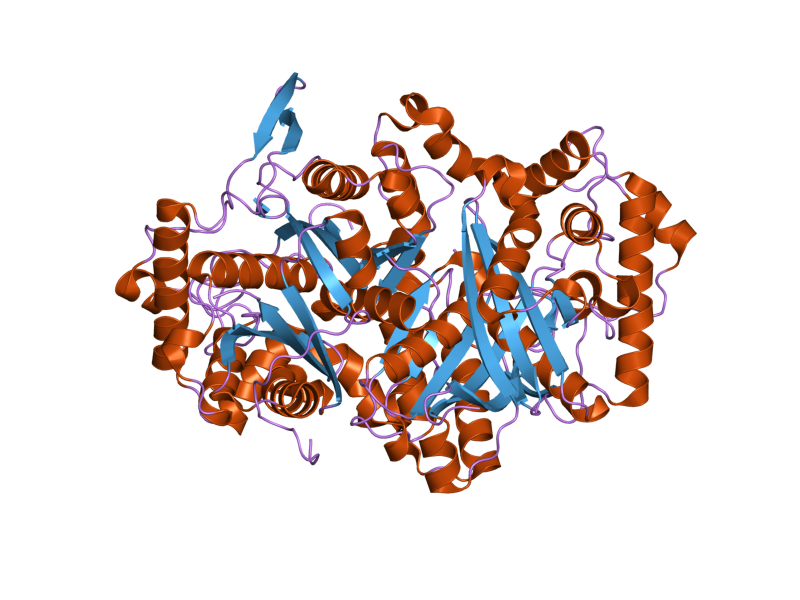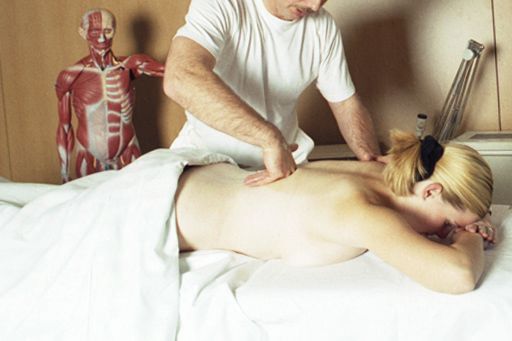|
Rhizomelic Chondrodysplasia Punctata
Rhizomelic chondrodysplasia punctata is a rare developmental brain disorder characterized by abnormally short arms and legs (''rhizomelia''), seizures, recurrent respiratory tract infections and congenital cataracts. The cause is a genetic mutation that results in low levels of plasmalogens, which are a type of lipid found in cell membranes throughout the body, but whose function is not known. Signs and symptoms Rhizomelic chondrodysplasia punctata has the following symptoms: * Bilateral shortening of the femur, resulting in short legs * Post-natal growth problems (deficiency) * Cataracts * Intellectual disability * Possible seizures * Possible infections of respiratory tract Genetics This condition is a consequence of mutations in the '' PEX7'' gene, the '' GNPAT'' gene (which is located on chromosome 1) or the '' AGPS'' gene. The condition is acquired in an autosomal recessive manner. Pathophysiology The mechanism of rhizomelic chondrodysplasia punctata in the case of type ... [...More Info...] [...Related Items...] OR: [Wikipedia] [Google] [Baidu] |
Plasmalogens
Plasmalogens are a class of glycerophospholipid with a plasmenyl group linked to a lipid at the sn-1 position of the glycerol backbone. Plasmalogens are found in multiple domains of life, including mammals, invertebrates, protozoa, and anaerobic bacteria. They are commonly found in cell membranes in the nervous, immune, and cardiovascular systems. In humans, lower levels of plasmalogens are studied in relation to some diseases. Plasmalogens are also associated with adaptations to extreme environments in non-human organisms. Structure Glycerophospholipids of biochemical relevance are divided into three subclasses based on the substitution present at the sn-1 position of the glycerol backbone: acyl, alkyl and alkenyl. Of these, the alkyl and alkenyl moiety in each case form an ether bond, which makes for two types of ether phospholipids, plasmanyl (alkyl moiety at sn-1), and plasmenyl (alkenyl moiety with vinyl ether linkage at sn-1). Plasmalogens are plasmenyls with an ester ... [...More Info...] [...Related Items...] OR: [Wikipedia] [Google] [Baidu] |
Recessive
In genetics, dominance is the phenomenon of one variant (allele) of a gene on a chromosome masking or overriding the effect of a different variant of the same gene on the other copy of the chromosome. The first variant is termed dominant and the second is called recessive. This state of having two different variants of the same gene on each chromosome is originally caused by a mutation in one of the genes, either new (''de novo'') or inherited. The terms autosomal dominant or autosomal recessive are used to describe gene variants on non-sex chromosomes ( autosomes) and their associated traits, while those on sex chromosomes (allosomes) are termed X-linked dominant, X-linked recessive or Y-linked; these have an inheritance and presentation pattern that depends on the sex of both the parent and the child (see Sex linkage). Since there is only one Y chromosome, Y-linked traits cannot be dominant or recessive. Additionally, there are other forms of dominance, such as incompl ... [...More Info...] [...Related Items...] OR: [Wikipedia] [Google] [Baidu] |
Peroxisomal Disorder
Peroxisomal disorders represent a class of medical conditions caused by defects in peroxisome functions. This may be due to defects in single enzymes important for peroxisome function or in peroxins, proteins encoded by ''PEX'' genes that are critical for normal peroxisome assembly and biogenesis. Peroxisome biogenesis disorders Peroxisome biogenesis disorders (PBDs) include the Zellweger syndrome spectrum (PBD-ZSD) and rhizomelic chondrodysplasia punctata type 1 (RCDP1). PBD-ZSD represents a continuum of disorders including infantile Refsum disease, neonatal adrenoleukodystrophy, and Zellweger syndrome. Collectively, PBDs are autosomal recessive developmental brain disorders that also result in skeletal and craniofacial dysmorphism, liver dysfunction, progressive sensorineural hearing loss, and retinopathy. PBD-ZSD is most commonly caused by mutations in the ''PEX1'', ''PEX6'', ''PEX10'', ''PEX12'', and ''PEX26'' genes. This results in the over-accumulation of very long chain ... [...More Info...] [...Related Items...] OR: [Wikipedia] [Google] [Baidu] |
Plasmalogen
Plasmalogens are a class of glycerophospholipid with a plasmenyl group linked to a lipid at the sn-1 position of the glycerol backbone. Plasmalogens are found in multiple domains of life, including Mammal, mammals, Invertebrate, invertebrates, protozoa, and Anaerobic organism, anaerobic bacteria. They are commonly found in cell membranes in the nervous system, nervous, immune system, immune, and cardiovascular systems. In humans, lower levels of plasmalogens are studied in relation to some diseases. Plasmalogens are also associated with adaptations to extreme environments in non-human organisms. Structure Glycerophospholipids of biochemical relevance are divided into three subclasses based on the substitution present at the Glycerophospholipid#Nomenclature and stereochemistry, sn-1 position of the glycerol backbone: acyl_group, acyl, alkyl_group, alkyl and alkenyl_group, alkenyl. Of these, the alkyl and alkenyl moiety in each case form an ether bond, which makes for two types o ... [...More Info...] [...Related Items...] OR: [Wikipedia] [Google] [Baidu] |
Developmental Disabilities
Developmental disability is a diverse group of chronic conditions, comprising mental or physical impairments that arise before adulthood. Developmental disabilities cause individuals living with them many difficulties in certain areas of life, especially in "language, mobility, learning, self-help, and independent living".Center for Disease Control and Prevention. (2013)Developmental disabilities.Retrieved October 18, 2013 Developmental disabilities can be detected early on and persist throughout an individual's lifespan. Developmental disability that affects all areas of a child's development is sometimes referred to as global developmental delay. The most common developmental disabilities are: * Motor disorders, and learning difficulties such as dyslexia, Tourette's syndrome, dyspraxia, dysgraphia, dyscalculia, and nonverbal learning disorder. * autistic spectrum disorders, Autism spectrum disorder (ASD, formerly the pervasive developmental disorders, PDD umbrella covering Asperg ... [...More Info...] [...Related Items...] OR: [Wikipedia] [Google] [Baidu] |
Orthopedic
Orthopedic surgery or orthopedics ( alternative spelling orthopaedics) is the branch of surgery concerned with conditions involving the musculoskeletal system. Orthopedic surgeons use both surgical and nonsurgical means to treat musculoskeletal trauma, spine diseases, sports injuries, degenerative diseases, infections, tumors and congenital disorders. Etymology Nicholas Andry coined the word in French as ', derived from the Ancient Greek words ("correct", "straight") and ("child"), and published ''Orthopedie'' (translated as ''Orthopædia: Or the Art of Correcting and Preventing Deformities in Children'') in 1741. The word was assimilated into English as ''orthopædics''; the ligature ''æ'' was common in that era for ''ae'' in Greek- and Latin-based words. As the name implies, the discipline was initially developed with attention to children, but the correction of spinal and bone deformities in all stages of life eventually became the cornerstone of orthopedic pr ... [...More Info...] [...Related Items...] OR: [Wikipedia] [Google] [Baidu] |
Physical Therapy
Physical therapy (PT), also known as physiotherapy, is a healthcare profession, as well as the care provided by physical therapists who promote, maintain, or restore health through patient education, physical intervention, disease prevention, and health promotion. Physical therapist is the term used for such professionals in the United States, and physiotherapist is the term used in many other countries. The career has many specialties including musculoskeletal, orthopedics, cardiopulmonary, neurology, endocrinology, sports medicine, geriatrics, pediatrics, women's health, wound care and electromyography. PTs practice in many settings, both public and private. In addition to clinical practice, other aspects of physical therapy practice include research, education, consultation, and health administration. Physical therapy is provided as a primary care treatment or alongside, or in conjunction with, other medical services. In some jurisdictions, such as the United Kin ... [...More Info...] [...Related Items...] OR: [Wikipedia] [Google] [Baidu] |
DHAPAT
Glyceronephosphate ''O''-acyltransferase is an enzyme associated with rhizomelic chondrodysplasia punctata Rhizomelic chondrodysplasia punctata is a rare developmental brain disorder characterized by abnormally short arms and legs (''rhizomelia''), seizures, recurrent respiratory tract infections and congenital cataracts. The cause is a genetic mutat ... type 2. The gene encoding it, ''GNPAT'', is located on chromosome 1 on the plus strand. The gene '' C1orf131'' is located directly upstream of it, and the closest downstream gene is '' EXOC8''. References External links * EC 2.3.1 {{2.3-enzyme-stub ... [...More Info...] [...Related Items...] OR: [Wikipedia] [Google] [Baidu] |
Peroxisome Biogenesis Disorders
Peroxisomal disorders represent a class of medical conditions caused by defects in peroxisome functions. This may be due to defects in single enzymes important for peroxisome function or in peroxins, proteins encoded by ''PEX'' genes that are critical for normal peroxisome assembly and biogenesis. Peroxisome biogenesis disorders Peroxisome biogenesis disorders (PBDs) include the Zellweger syndrome spectrum (PBD-ZSD) and rhizomelic chondrodysplasia punctata type 1 (RCDP1). PBD-ZSD represents a continuum of disorders including infantile Refsum disease, neonatal adrenoleukodystrophy, and Zellweger syndrome. Collectively, PBDs are autosomal recessive developmental brain disorders that also result in skeletal and craniofacial dysmorphism, liver dysfunction, progressive sensorineural hearing loss, and retinopathy. PBD-ZSD is most commonly caused by mutations in the ''PEX1'', ''PEX6'', ''PEX10'', ''PEX12'', and ''PEX26'' genes. This results in the over-accumulation of very long chain ... [...More Info...] [...Related Items...] OR: [Wikipedia] [Google] [Baidu] |
Radiography
Radiography is an imaging technology, imaging technique using X-rays, gamma rays, or similar ionizing radiation and non-ionizing radiation to view the internal form of an object. Applications of radiography include medical ("diagnostic" radiography and "therapeutic radiography") and industrial radiography. Similar techniques are used in airport security, (where "body scanners" generally use backscatter X-ray). To create an image in conventional radiography, a beam of X-rays is produced by an X-ray generator and it is projected towards the object. A certain amount of the X-rays or other radiation are absorbed by the object, dependent on the object's density and structural composition. The X-rays that pass through the object are captured behind the object by a X-ray detector, detector (either photographic film or a digital detector). The generation of flat two-dimensional images by this technique is called Projection radiography, projectional radiography. In computed tomography (C ... [...More Info...] [...Related Items...] OR: [Wikipedia] [Google] [Baidu] |
Genetic Testing
Genetic testing, also known as DNA testing, is used to identify changes in DNA sequence or chromosome structure. Genetic testing can also include measuring the results of genetic changes, such as RNA analysis as an output of gene expression, or through biochemical analysis to measure specific protein output. In a medical setting, genetic testing can be used to diagnose or rule out suspected genetic disorders, predict risks for specific conditions, or gain information that can be used to customize medical treatments based on an individual's genetic makeup. Genetic testing can also be used to determine biological relatives, such as a child's biological parentage (genetic mother and father) through DNA paternity testing, or be used to broadly predict an individual's ancestry. Genetic testing of plants and animals can be used for similar reasons as in humans (e.g. to assess relatedness/ancestry or predict/diagnose genetic disorders), to gain information used for selective breed ... [...More Info...] [...Related Items...] OR: [Wikipedia] [Google] [Baidu] |
Peroxisome
A peroxisome () is a membrane-bound organelle, a type of microbody, found in the cytoplasm of virtually all eukaryotic cells. Peroxisomes are oxidative organelles. Frequently, molecular oxygen serves as a co-substrate, from which hydrogen peroxide (H2O2) is then formed. Peroxisomes owe their name to hydrogen peroxide-generating and scavenging activities. They perform key roles in lipid metabolism and the redox, reduction of reactive oxygen species. Peroxisomes are involved in the catabolism of very long chain fatty acids, branched chain fatty acids, bile acid intermediates (in the liver), D-amino acids, and polyamines. Peroxisomes also play a role in the biosynthesis of plasmalogens: ether phospholipids critical for the normal function of mammalian brains and lungs. Peroxisomes contain approximately 10% of the total activity of two enzymes (Glucose-6-phosphate dehydrogenase and Phosphogluconate dehydrogenase, 6-Phosphogluconate dehydrogenase) in the pentose phosphate pathway, ... [...More Info...] [...Related Items...] OR: [Wikipedia] [Google] [Baidu] |






